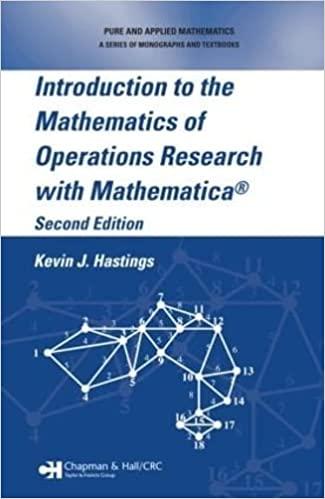A program vehicle is used by a car dealer until it reaches the end of its useful
Question:
A program vehicle is used by a car dealer until it reaches the end of its useful lifetime, and then is immediately replaced by a similar vehicle. It is reasonable to suppose that the successive lifetimes \(Z_{1}, Z_{2}, Z_{3}, \ldots\) of these vehicles are i.i.d. with some discrete distribution: \(p_{j}=P[Z=j], j=1,2,3, \ldots\). Assume also that if the old vehicle breaks during time period \([n, n+1)\), then the new one is put into service at time \(n+1\). Let \(Y_{n}\) be the age of the vehicle in use at the start of time \(n\). (Then \(Y_{n+1}\) is 0 if the vehicle in use at time \(n\) was replaced.)
(a) Compute \(q_{i}=P\left[Y_{n+1}=i+1 \mid Y_{n}=i\right]\).
(b) Find the transition matrix \(T\) of \(\left(Y_{n}\right)\).
(c) Show that row \(i\) of \(T^{2}\) has non-zero entries only in columns 0,1 , and \(i+2\), and find those entries in terms of the \(q_{i}\) 's.
Step by Step Answer:

Introduction To The Mathematics Of Operations Research With Mathematica
ISBN: 9781574446128
1st Edition
Authors: Kevin J Hastings





